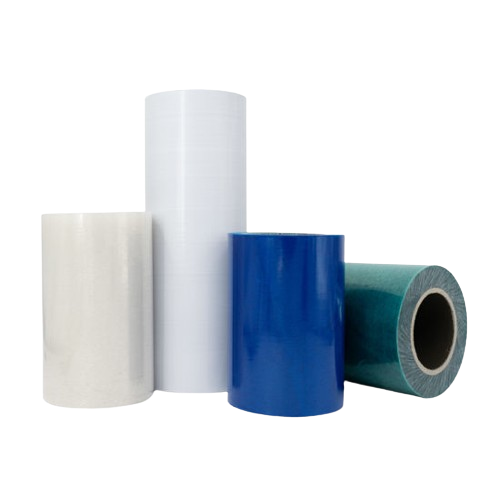Global Plastic Pallet Market Share (2018-2023)
Pallets are horizontal platforms which offer a base for storing, handling, assembling and transporting product...
Semi-finished plastic products and parts serve as versatile building blocks for a wide range of industries, enabling manufacturers to create customized and tailored solutions that meet specific requirements. From sheets and films to rods and tubes, these intermediate components offer a combination of durability, functionality, and cost-effectiveness, making them essential elements in the production of final products across various sectors.
Acrylic sheets, also known as polymethyl methacrylate (PMMA) sheets, are renowned for their exceptional clarity, light transmission, and weather resistance. These transparent thermoplastic materials are widely used in applications such as signage, display cases, aquariums, and architectural glazing, offering superior impact resistance compared to glass and the ability to be easily fabricated through cutting, drilling, and thermoforming.
Polycarbonate sheets are prized for their exceptional impact resistance, making them an ideal choice for applications that require high strength and durability. These thermoplastic sheets are commonly used in construction, automotive, and aerospace industries for glazing, roofing, safety barriers, transparent components, and protective shields. They offer superior heat resistance, dimensional stability, and resistance to chemicals, UV radiation, and weathering, ensuring long-lasting performance in demanding environments.
PVC (polyvinyl chloride) sheets are versatile and widely used due to their excellent chemical resistance, durability, and cost-effectiveness. These thermoplastic sheets find applications in signage, construction, packaging, and automotive interiors, offering good impact resistance and the ability to withstand harsh environments. PVC sheets are available in a range of colors, thicknesses, and surface finishes, and can be easily fabricated through cutting, drilling, and forming techniques.
PET (polyethylene terephthalate) sheets are known for their exceptional clarity, strength, and chemical resistance. These thermoplastic sheets are widely used in various applications, including food packaging, blister packaging, and thermoforming processes, offering excellent barrier properties to protect products from moisture, oxygen, and other environmental factors. PET sheets provide high impact resistance, ensuring durability and product protection during transportation and handling.
PETG (polyethylene terephthalate glycol) sheets are a versatile and durable material widely used in the furniture industry. These thermoplastic sheets offer excellent impact resistance, making them suitable for applications that require high strength and durability, such as furniture components, shelving, and display cases. PETG sheets are known for their clarity and transparency, allowing for the creation of visually appealing and modern furniture designs.
PLA (polylactic acid) sheets are a sustainable and eco-friendly alternative to traditional plastic materials. These sheets are derived from renewable resources, such as corn starch or sugarcane, making them a popular choice for environmentally conscious manufacturers and consumers. PLA sheets offer good clarity, stiffness, and printability, making them suitable for a wide range of applications, including packaging, signage, and 3D printing filaments.
Plastic films are thin, flexible sheets made from various thermoplastic materials, such as polyethylene, polypropylene, and PVC. These films are widely used in a variety of applications, including packaging, agriculture, construction, and industrial sectors, offering excellent barrier properties to protect products from moisture, oxygen, and other environmental factors. Plastic films can be designed with specific characteristics, such as transparency, opacity, or printability, to meet the requirements of different applications.
Card base materials are specialized plastic sheets or films used in the production of various types of cards, such as credit cards, ID cards, and access control cards. These materials are designed to provide durability, security features, and printability, ensuring the longevity and functionality of the cards. Card base materials are typically made from thermoplastic polymers like PVC, polycarbonate, or composite materials, offering excellent resistance to wear, tear, and environmental factors.





Finding the perfect product for your needs is just a click away! We offer a comprehensive catalog packed with detailed information on all our offerings. Download your copy today and delve into the vast selection we have available. Within the catalog, you’ll find clear descriptions, specifications, and images to help you make informed decisions. Whether you’re searching for specific items or simply browsing for inspiration, our catalog is your one-stop resource. Once you’ve had a chance to review the catalog, feel free to send us an email with any questions or specific requests you may have. Our knowledgeable team is here to assist you and ensure you find the perfect solution for your needs.

Pallets are horizontal platforms which offer a base for storing, handling, assembling and transporting product...
Plastic is a word that originally meant “pliable and easily shaped.” It only recently became a name for a...
In an effort to provide a consistent metric to guide the efforts of sustainability for plastics in the Circula...
Since the introduction of engineering-grade resins and plastic materials in the 1950s, many parts previously f...
Polycarbonate and Acrylic are both well known as transparent plastics. They have wide applicability in a numbe...
The BPF reflects on its participation in ‘Arabplast’ With a booming construction industry and a ready supp...